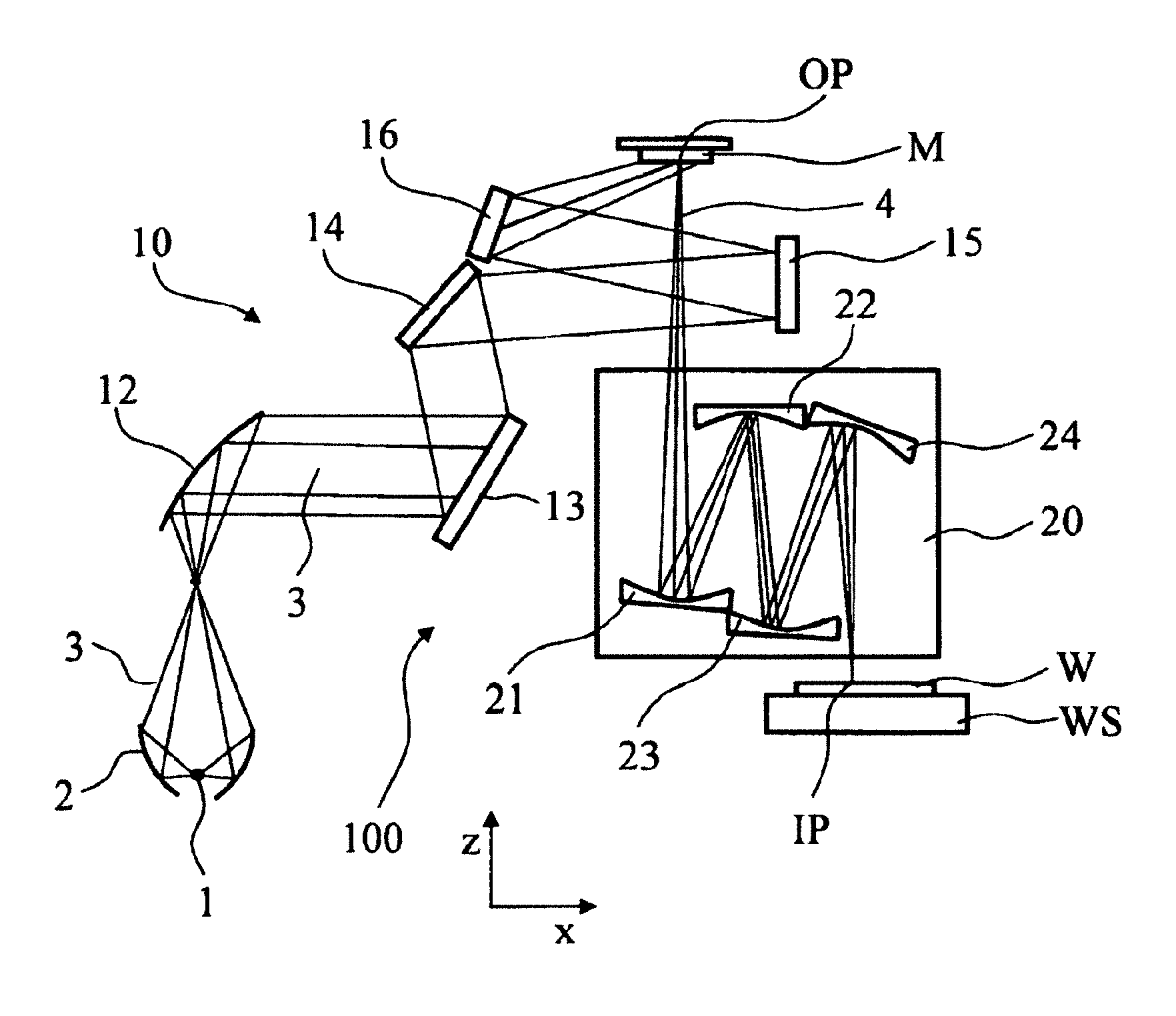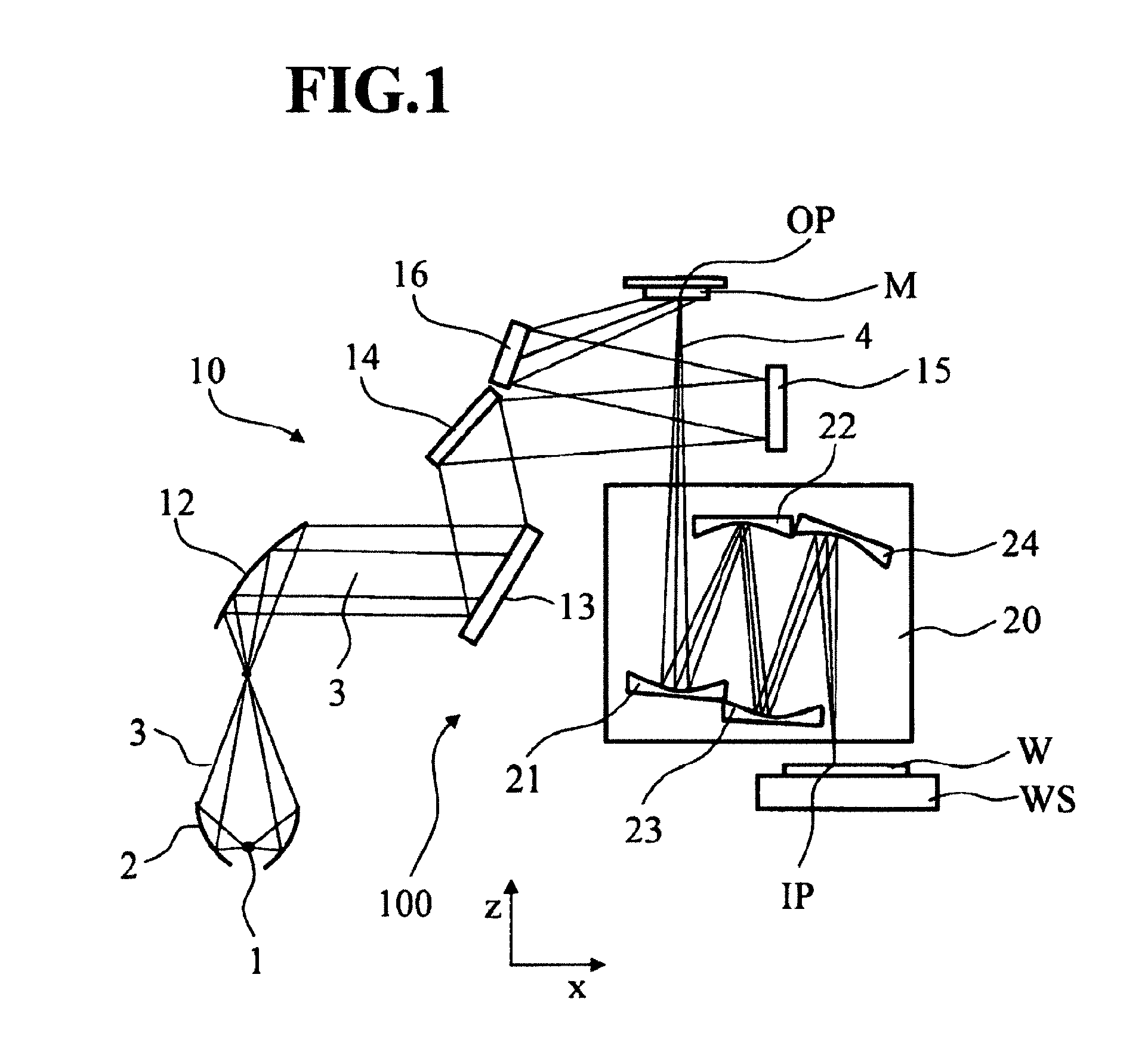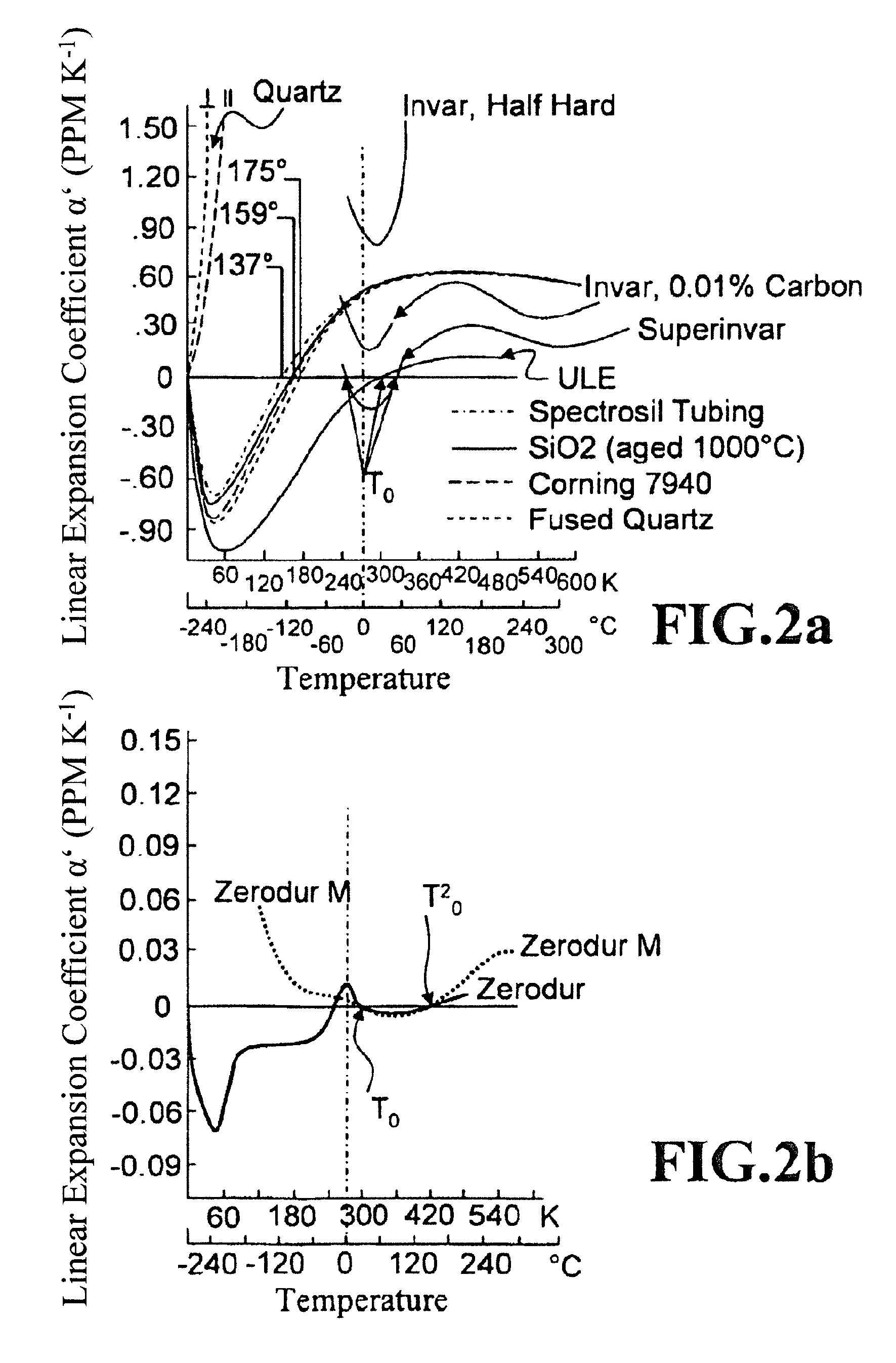EUV exposure apparatus with reflective elements having reduced influence of temperature variation
a technology of reflective elements and exposure apparatuses, which is applied in the field of reflective optical elements, can solve the problems of reducing the image quality of substrates or wafers, unable to meet the needs of optical lenses, and unable to work with reflective optical elements like mirrors or diffractive optical elements, so as to achieve the effect of reducing the influen
- Summary
- Abstract
- Description
- Claims
- Application Information
AI Technical Summary
Benefits of technology
Problems solved by technology
Method used
Image
Examples
second embodiment
[0087]As a further second embodiment of such a first projection lens the lens can comprise four or six reflective optical elements Mi or mirrors (as e.g. shown in FIG. 1 and in FIG. 6) and preferably the projection lens is designed to be exposed with an exposure power of more than 10 W. In this case the absolute value of the difference between the zero cross temperatures T0m, T0n is more than 8K, expresses as abs(T0m−T0n)>8K. For the 6-mirror lens of FIG. 6, FIG. 9 clearly shows this for the mirrors M5 and M4 or M6. The zero cross temperatures of these mirrors differ by more than 8 K if the exposure power goes above 10 W.
third embodiment
[0088]The first projection lens and its previous embodiments in a third embodiment may comprise a support structure for passively or actively supporting the reflective optical elements Mi, as it was described in connection with FIG. 4 and FIG. 5. The temperature of at least a part of the support structure is at a reference temperature TRef, which is e.g. selected as 22° C. Further, the lens in accordance with an embodiment of the first lens comprises a heater 300 for heating at least one of the mirror bodies MBn, MBm which comprise the materials with the different zero cross temperatures. A temperature control system 200 controls the temperature of the at least one heated mirror body MBn, MBm to a temperature Tk. Preferably the heater 300 is made such that the body can be homogenously heated. This means that the body MBn, MBm is homogenously heated in at least one dimension of the body. Various types of heaters 300 will be described below in this description.
fourth embodiment
[0089]In an further fourth embodiment of the first lens (and its previous embodiments), there, without the operation of the just mentioned heater 300, the exposure of the reflective surfaces MSm and MSn of the bodies MBn, MBm with EUV light, results in temperature distributions ΔTn(x,y,z)=(Tn(x,y,z)−TRef), ΔTm(x,y,z)=(Tm(x,y,z)−TRef) of the bodies MBn, MBm relative to the reference temperature TRef with respective average and maximum temperatures ΔTnav, ΔTmav and ΔTnmax and ΔTmmax. The EUV light with which the reflective surfaces MSm and MSn are exposed is reflected by the illuminated reticle and comprises a spatial distribution of angular, polarization and intensity parameters in accordance with an illumination setting. In this embodiment at least one zero cross temperatures T0m, T0n is selected higher than the maximum of the highest reference temperature TRef and the respective average or maximum temperature ΔTmav+Tref or ΔTmmax+Tref, ΔTnav+Tref or ΔTnmax+Tref, based on the respec...
PUM
 Login to View More
Login to View More Abstract
Description
Claims
Application Information
 Login to View More
Login to View More - R&D
- Intellectual Property
- Life Sciences
- Materials
- Tech Scout
- Unparalleled Data Quality
- Higher Quality Content
- 60% Fewer Hallucinations
Browse by: Latest US Patents, China's latest patents, Technical Efficacy Thesaurus, Application Domain, Technology Topic, Popular Technical Reports.
© 2025 PatSnap. All rights reserved.Legal|Privacy policy|Modern Slavery Act Transparency Statement|Sitemap|About US| Contact US: help@patsnap.com



